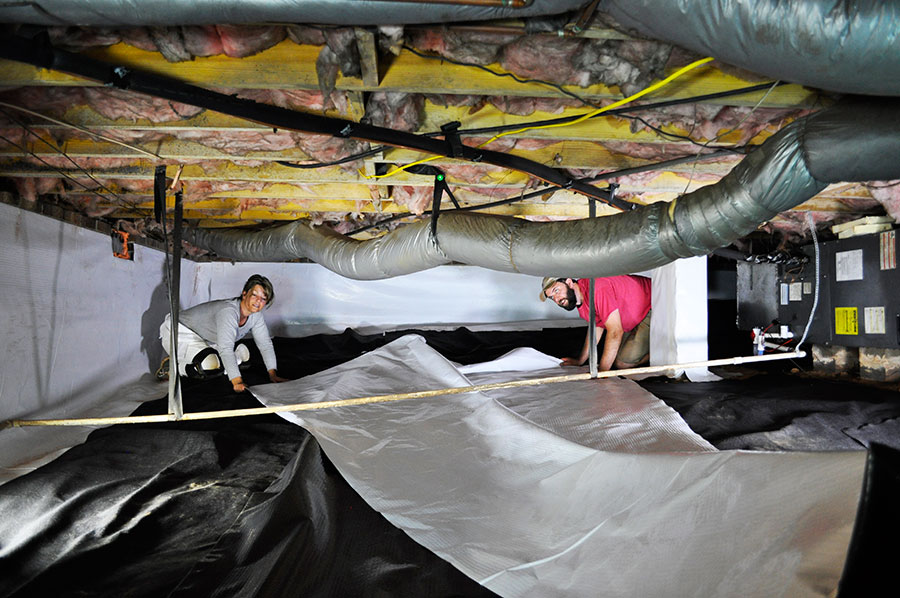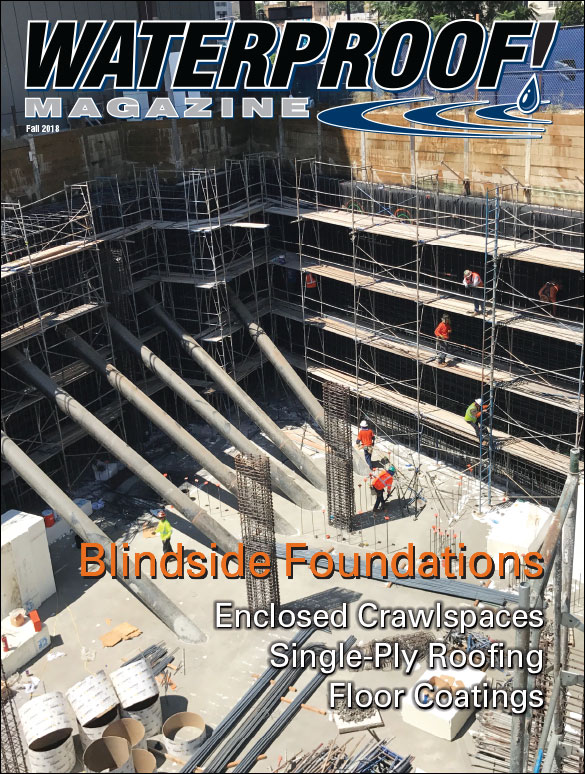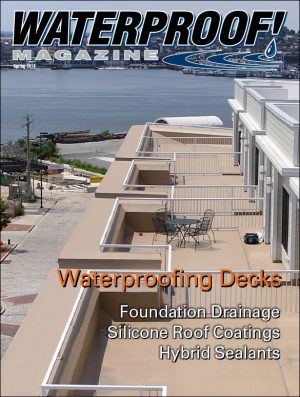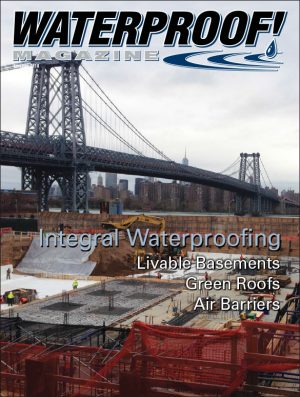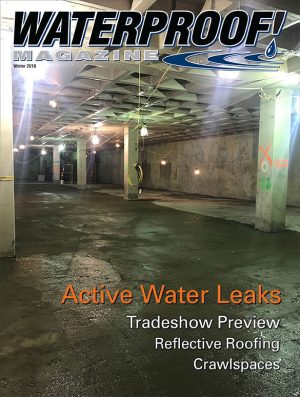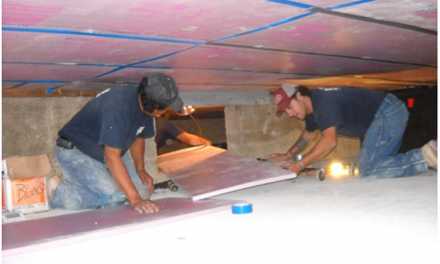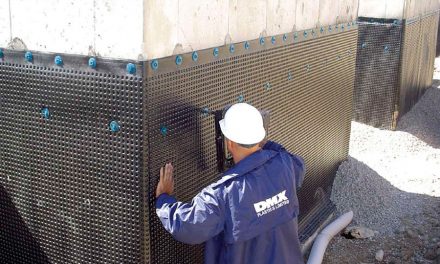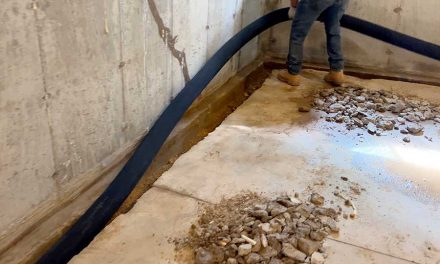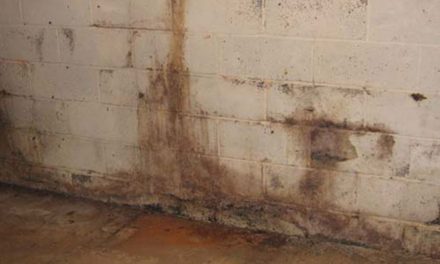Enclosed crawlspaces improve the air quality and energy efficiency of the living space above.
Unfortunately, crawlspaces pose a major problem—for several decades they have been built and maintained incorrectly. Building codes and conventional wisdom have insisted that crawlspaces be ventilated with outside air to control moisture and improve drainage within the space.
However, wall-vented crawlspaces can actually be the cause of moisture buildup and other complications in households, especially in southeastern United States. Many unpleasant symptoms are associated with wall-vented crawlspaces. These are most often noticed in the humid spring or summer seasons, but can occur in the home anytime of the year.
Common symptoms experienced with a conventional wall-vented crawlspace include:
- Mold or moisture damage in the crawlspace or living area
- Musty odors in the living area
- Condensation (“sweating”) on air conditioning ductwork or equipment
- Condensation on insulation, water pipes or truss plates in the crawlspace
- Buckled hardwood floors
- High humidity in the living area
- Rot in wooden framing members
- Insect infestations
Before Advanced Energy’s research found the failures of wall-vented crawlspaces, the most common treatment for dealing with these symptoms was to add even more ventilation, by either installing additional ventilation openings to the outside or installing fans to deliberately move more outside air through the crawlspace. With high costs and time-consuming repairs to resolve the moisture concerns and other difficulties, homeowners, property managers, tenants, and the construction industry became more aware of the importance of finding ways to stop these symptoms from the start. This awareness led to research on closed crawlspaces. Research conducted by Advanced Energy found that closed crawlspaces, insulated spaces without vents to the outside, can significantly improve moisture control and have major energy savings with proper installation.
The Ventilation Myth
So why doesn’t ventilation with outside air simply dry out a crawlspace like conventional wisdom would have us believe? There are three main properties of air that disprove that notion: temperature, relative humidity and dew point temperature.
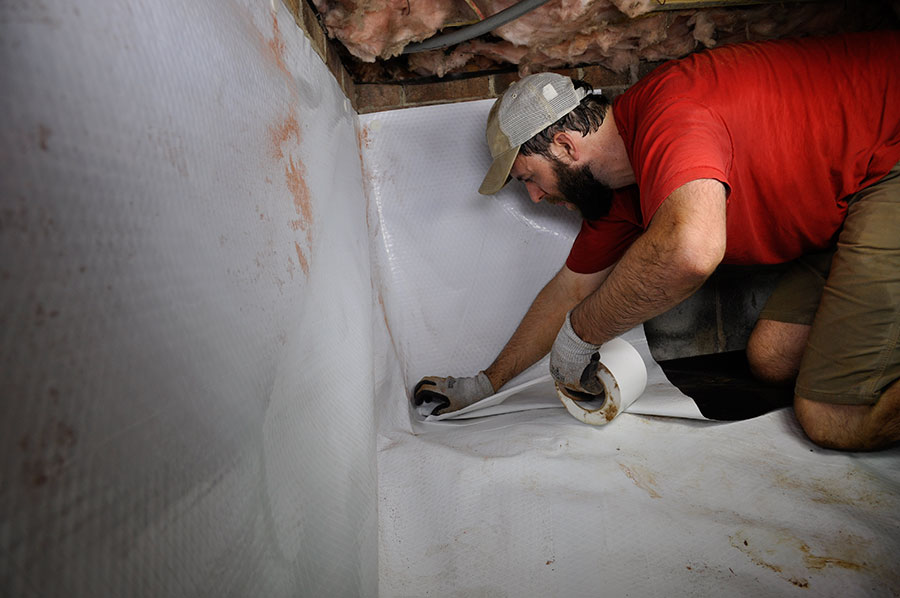
The liner should be installed up the walls, not only the floor .
To begin, let’s define these properties: Temperature is the measure of heat in the air. Relative humidity is the percentage of the water vapor in the air compared to the maximum amount of water vapor the air can hold. This is important because there is a limit to how much water vapor can be held in air before the water vapor condenses into a liquid. Finally, dew point is the temperature at which the water vapor in the air condenses into liquid water. Research from Advanced Energy has confirmed that these three components contribute to the failures of wall-vented crawlspaces:
“Outside air contains more water vapor than the air in the crawlspace during the warm seasons, and has no potential to dry the crawlspace. Instead, the outside air ends up contributing water vapor to the crawlspace.”
To simply state it, using outside air to ventilate a crawlspace only adds more moisture to the area—it does not dry it out. Furthermore, wall-vented crawlspaces allow condensation, surface mold growth, high wood moisture content and rotting wood to increase.
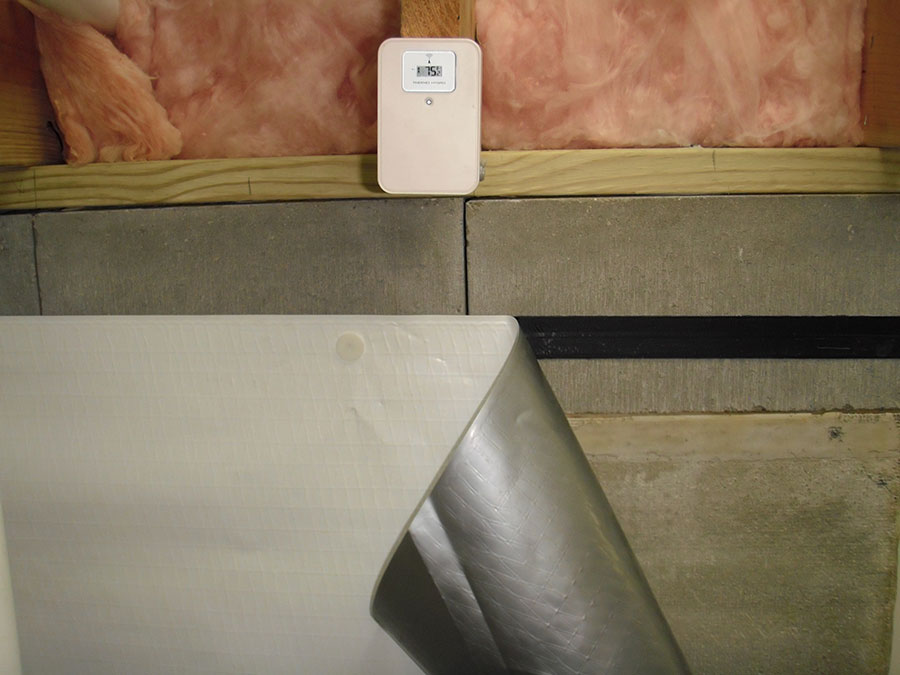
Wireless monitors transmit temperature and humidity information to the homeowner.
The Outstanding Benefits
The most significant benefit of closing a crawlspace is improving the quality of life of a household. Without moisture and mold building in the foundation of a home, air quality will easily improve in the home, which can greatly reduce heath side effects caused by air pollution. Research by Advanced Energy has also found that by insulating the crawlspace, heating and cooling costs can be reduced by up to 18%. Furthermore, closed crawlspaces create warmer floors during the winter seasons and minimize damage to hardwood.
A Proper Design
Now that a solution has been discovered, researchers and installers have been testing and improving closed crawlspace designs. There are many components to consider when designing a proper crawlspace that will meet and surpass the minimum requirements for the state’s residential codes.
The main components of a good crawlspace design are:
- Moisture management
- Pest control
- Combustion safety
- Fire safety
- Thermal insulation
- Radon control
Moisture management is the primary goal for any closed crawlspace system, therefore, it is the most important requirement. Two basic strategies are used to manage both liquid water and water vapor: blocking sources and facilitating removal.
“Facilitating removal” outlines the various ways to mitigate the moisture that will inevitably get into even a closed crawlspace, whereas “blocking sources” describe the methods in handling factors such as roof runoff, exterior ground and surface water, humid air and evaporation from the ground and perimeter walls.
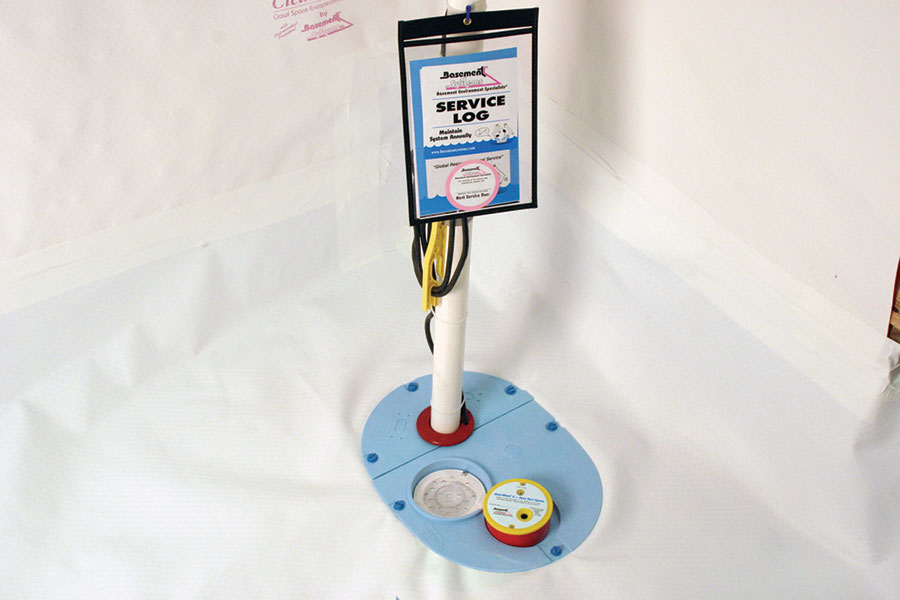
Liquid water and drainage must be addressed. A variety of sump pump systems are compatible with enclosed crawlspaces.
In addition, pest control is a priority throughout every step of installing and maintaining a closed crawlspace. Perimeter walls are the most common path wood-destroying insects take to get from the ground to the structure so designers must pay extra attention to the materials applied to these walls.
Furthermore, combustion and fire safety, thermal insulation and radon control are additional requirements to keep a crawlspace safe and running well without posing any danger to the home.
The Installation
Finding a qualified installer is a large challenge to getting a properly closed crawlspace. To help with the process, Advanced Energy offers materials and information generated from research projects, diagnostic investigations and collaboration with a variety of professional installers and consultants across the country. After a qualified installer has been contacted and the design has been defined, both the homeowner and the installer will need to work with the local code official to ensure that the closed crawlspace design is acceptable and meets all code requirements for the state—section R409 in the North Carolina Building Code specifically outlines the requirements of a closed crawlspace.
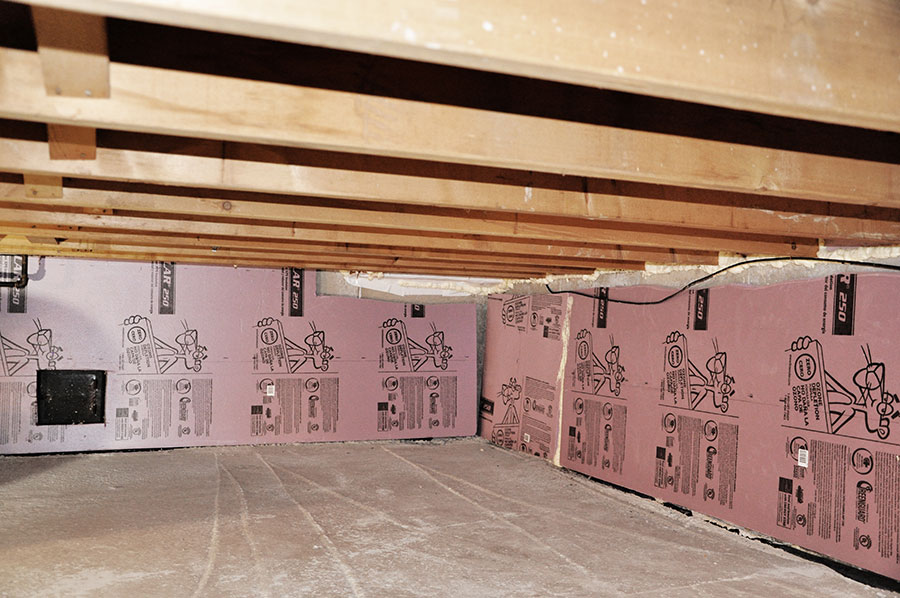
Walls should be insulated before the liner is placed. Options involve rigid foam (top) and flexible reflective products. (bottom)
Proper scheduling and logistics is another important concern, since many strategies to manage the components of a crawlspace are time-sensitive. For instance, as soon as the sub-flooring is installed, all crawlspaces can become ideal environments for growing mold. Consequently, managing the construction schedule is critical.
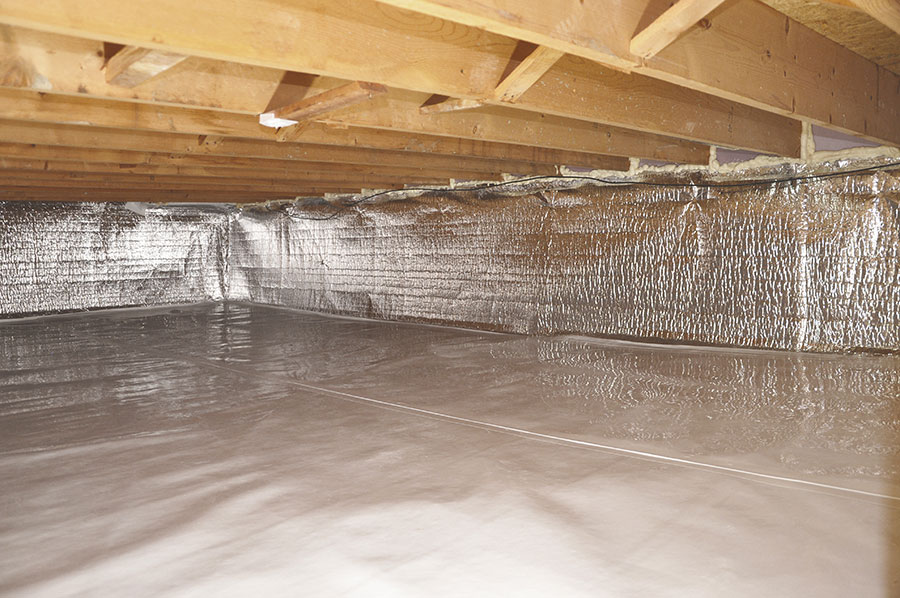
Quality installers of closed crawlspaces know the importance of managing moisture and other components during the construction process. Likewise, most experienced installers care about the long-term performance and typically offer quality assurance options, such as a monitoring system to inform the homeowner of relative humidity levels or a water alarm to inform the homeowner of a buildup of liquid water.
For those who currently have a wall-vented crawlspace—don’t lose hope! If you are unsatisfied with your existing crawlspace, there are many methods offered to either improve it or convert it into a closed space. However, there is much more to converting a crawlspace than just closing the existing vents. An experienced installer will know the appropriate steps to take in order to update a conventional wall-vented crawlspace.
Basic Crawlspace Maintenance
The crawlspace may not be the most popular place in the house to explore, but a periodic inspection is imperative to ensuring that potential problems are caught early on. Even though basic maintenance inspections can be done by any homeowner, some may choose to hire a private home inspector or other contractor to do it for them.
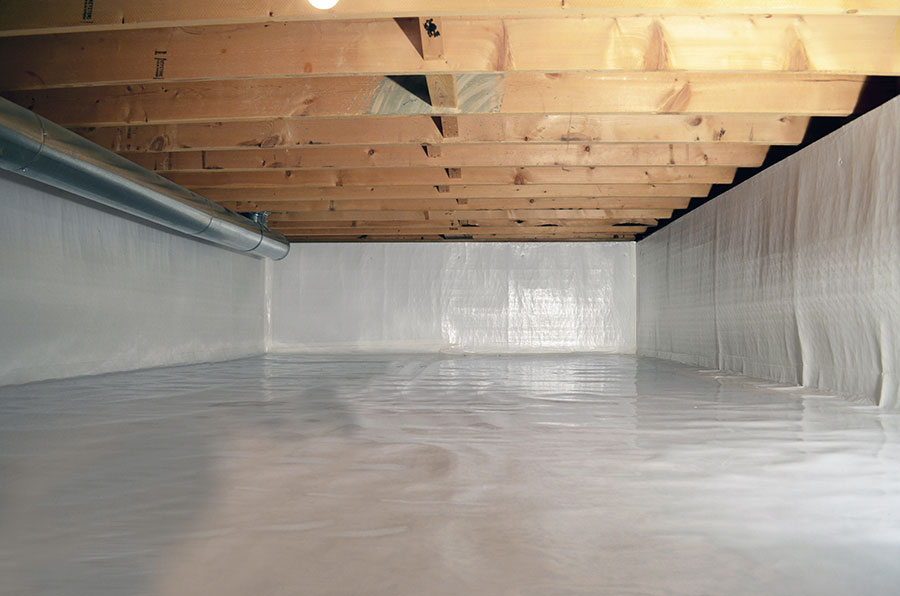
The finished lined crawlspace is bright, clean, dry, and energy efficient.
Property owners should frequently replace batteries in sensors or alarms as needed, check to ensure that access doors are closed, especially in warmer weather, and ensure that there are no potentially hazardous materials in the crawlspace. Most importantly, a homeowner needs to keep an eye on any water intrusion to make sure it is quickly drained or pumped out.
Bringing Crawlspaces to a Close
With the help of Advanced Energy’s research and investigations, closed crawlspaces are now the standard for LEED homes. This research also had a major impact on the North Carolina building code, making it easier to install closed crawlspaces. With the proper maintenance and installation, the benefits of having a closed crawlspace certainly outweigh traditionally vented spaces.
Lindsay Brecheisen is a communications intern and Jonathan Coulter is a building science specialist at Advanced Energy. They can be reached online at www.advancedenergy.org.
Fall 2018 Back Issue
$4.95
Blindside in Hollywood
Single Ply Roofing: A Primer
Options for Floor Coatings
The How and Why of Enclosed Crawlspaces
AVAILABLE AS DIGITAL DOWNLOAD ONLY
Description
Description
Blindside in Hollywood
With a seismic fault line running through the property and a multi-level water table, this apartment project in Southern California required unique below-grade waterproofing.
Single Ply Roofing: A Primer
By Mike Ennis
Single-ply roofing membranes, including PVC, TPO, and EPDM have become a popular and economical option for commercial flat roofs.
Options for Floor Coatings
By Vanessa Salvia
Epoxy and polyurethane formulations are both used to seal floors. Each system has advantages, and can be used successfully if properly installed.
The How and Why of Enclosed Crawlspaces
By Lindsay Brecheisen and Jonathan Coulter
Over the past decade, enclosed crawlspaces have become “best practice.” They improve efficiency and air quality, and are often a profitable retrofit options for waterproofing contractors to add to their list of services.
Additional Info
Additional information
| Magazine Format | Digital Download Magazine, Print Mailed Magazine |
|---|

